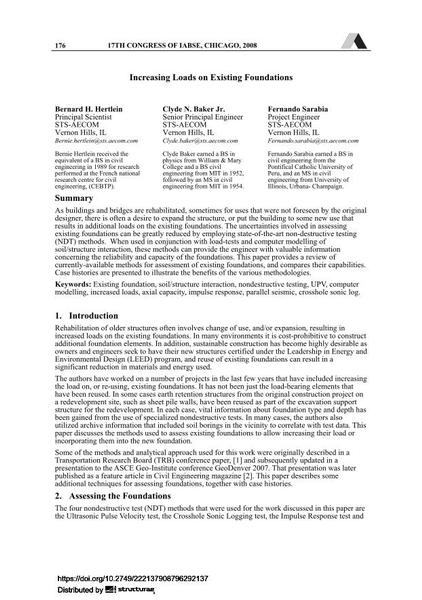Increasing Loads on Existing Foundations

|
|
|||||||||||
Bibliographic Details
| Author(s): |
Bernard H. Hertlein
Clyde N. Baker Jr. Fernando Sarabia |
||||
|---|---|---|---|---|---|
| Medium: | conference paper | ||||
| Language(s): | English | ||||
| Conference: | 17th IABSE Congress: Creating and Renewing Urban Structures – Tall Buildings, Bridges and Infrastructure, Chicago, USA, 17-19 September 2008 | ||||
| Published in: | IABSE Congress Chicago 2008 | ||||
|
|||||
| Page(s): | 176-177 | ||||
| Total no. of pages: | 8 | ||||
| Year: | 2008 | ||||
| DOI: | 10.2749/222137908796292137 | ||||
| Abstract: |
As buildings and bridges are rehabilitated, sometimes for uses that were not foreseen by the original designer, there is often a desire to expand the structure, or put the building to some new use that results in additional loads on the existing foundations. The uncertainties involved in assessing existing foundations can be greatly reduced by employing state-of-the-art non-destructive testing (NDT) methods. When used in conjunction with load-tests and computer modelling of soil/structure interaction, these methods can provide the engineer with valuable information concerning the reliability and capacity of the foundations. This paper provides a review of currently-available methods for assessment of existing foundations, and compares their capabilities. Case histories are presented to illustrate the benefits of the various methodologies. |
||||
| Keywords: |
non-destructive testing axial capacity computer modelling soil/structure interaction Existing foundation UPV increased load impulse response parallel seismic crosshole sonic log
|
||||
